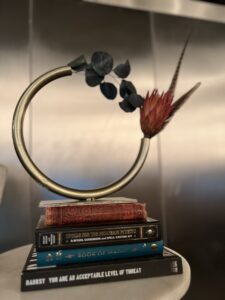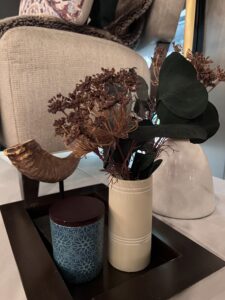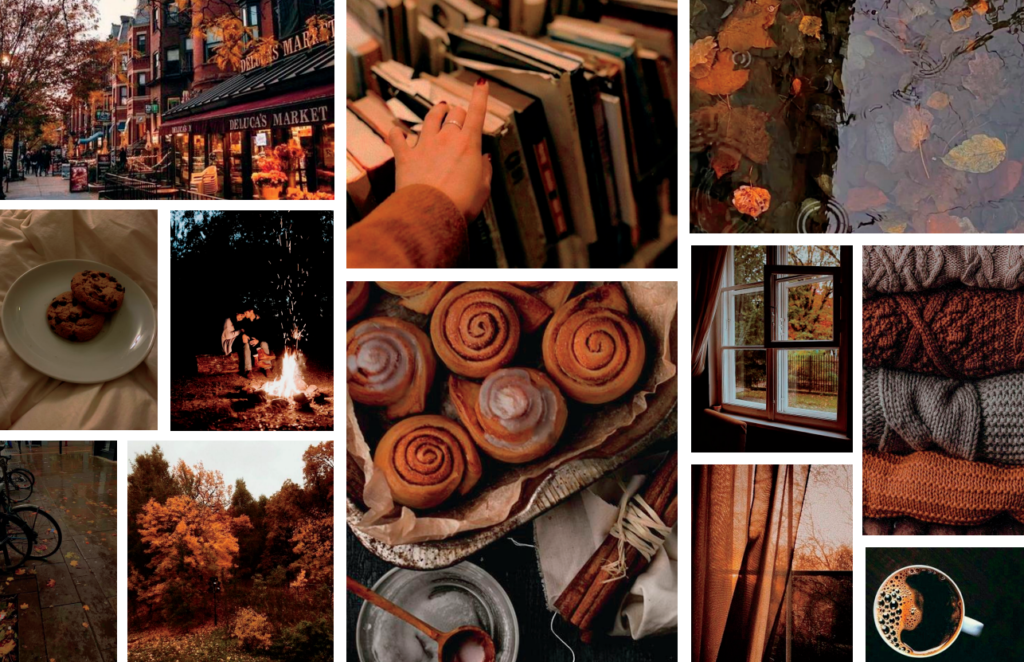Have you ever walked into a space that gives off a very distinct vibe, yet you couldn’t pick out a single piece perfectly representative of it? Like somehow, each piece was working together to create a specific essence? The way you felt in that space was no accident…it’s because the person who created it employed conceptual design when putting it together.
Conceptual design is the deliberate, intentional use of subtle elements to elicit a feeling within a space. Conceptual design is at the heart of what we do.
In fact, “Concetti” means “concept” in Italian.
To help get metro Detroiters better aquatinted with conceptual design and gear up for fall, we recently had the privilege of presenting as topic experts at Dish & Design: a series presented by The Detroit News Homestyle Team, sponsored by Busch’s Fresh Food Market.
If you missed it, don’t worry – we put together some snippets of our presentation to help you use conceptual design in your own space this fall.
Concept vs. Theme
Conceptual design is often synonymous with thought and care, which is why it is used so frequently in the art world. While there are no right and wrong answers in design, we almost always lean on this design method when a client approaches us with a vision.
 At Concetti, our unique process starts with a thorough exploration of who you are and what you need from your space. We then use a 3D prototype to explore different concepts for how your space can transform into something uniquely you. From there, we reverse engineer the final concept into a set of plans that are executed through collaborative partnerships.
At Concetti, our unique process starts with a thorough exploration of who you are and what you need from your space. We then use a 3D prototype to explore different concepts for how your space can transform into something uniquely you. From there, we reverse engineer the final concept into a set of plans that are executed through collaborative partnerships.
So, what if you don’t have the time or resources to lean on an expert team of design strategists? Don’t sweat it – you can still use conceptual design to create your perfectly cozy fall space.
First, you’ll need to take a step back and explore exactly what conceptual design is and what it is not.
We often explain conceptual design best by comparing it against its counterpart: Theme. Themes are more overt (think: literal items like pumpkins, upholstery, and textiles with orange leaves, or decorative accents that use the words “fall” or “cozy”).
On the other hand, concept is more abstract and requires you to choose pieces more reminiscent of fall. It’s a bit more challenging to reference specific examples here, which is why we recommend looking within and relying on what allows you to experience a space: your five senses.
 Creating Cozy Through Your Five Senses
Creating Cozy Through Your Five Senses
Trends need not apply here! The cool thing about using this method of design is that it puts you in touch with the things that make you, you.
Below are some examples of how you can navigate your five senses to create your conceptualized fall space.
We purposely left these examples brief because ultimately everyone’s taste and preferences are different – it’s up to you to find what works best for YOU!
- Touch. How amazing does it feel to crawl under a soft blanket? Try switching out your lighter summer blankets for something with a heavier ply.
- Sight. Visualize a warm color palette. If you’re a plant parent, this may look like incorporating things that signify fall – like branches or warmer tone pots – into your greenery.
- Smell. Don’t be afraid to get decadent here (it’s cozy season for a reason!) – get a simmer pot going on the stove or light a candle.
- Sound. Speaking of candles, a crackling candle usually does the trick for us. Or light up your fireplace if you have one!
- Taste. Our fabulous Dish & Design co-presenters Supergeil and Blake’s Hard Cider provided some tasty autumnal samples, but let your imagination run wild with this one. What’s a beverage or treat that immediately takes you back to a cozy fall memory at first taste?
These pieces from the Eldorado General Store helped bring our vision to life at Dish & Design!
Bringing Conceptual Design into Your Home
Now that you know how to fill your space by relying on your senses, this is the part that ties it all together and creates your unique concept: Creating your fall mood board.
A mood board is essentially a collage filled with visuals capturing your five senses in action during this time of year. Your board should feature brief glimmers and hints of fall as they appear in real life, rather than overt words or imagery. Here are mood boards we presented to our Dish & Design audience:
- Our vibrant summer mood board transitions…
- …to warm and dreamy for fall.
Pro Tip: Design yours in Pinterest or make a physical one using magazine cut-outs, old photos or other printed materials.
Whether you’re shopping for new pieces or repurposing items you already have in your home, keep this mood board handy and refer back to it as you transform your space – you can even take it shopping with you.
You now have the knowledge to create a space using conceptual design + your five senses, and the results are bound to be uniquely you. The best part is that you can replicate this process for all four seasons or whatever essence you’re looking to conceptualize in your space next!






